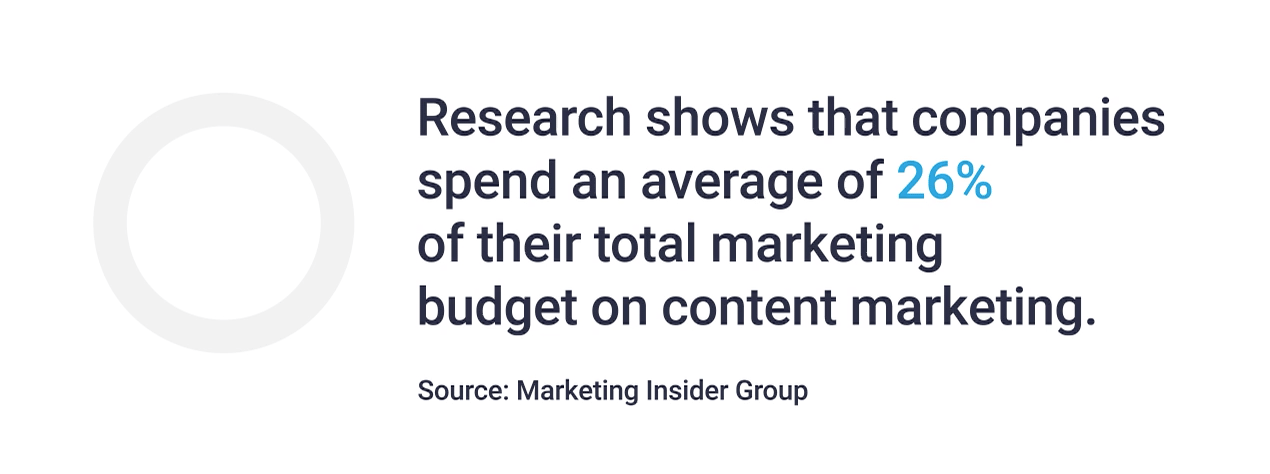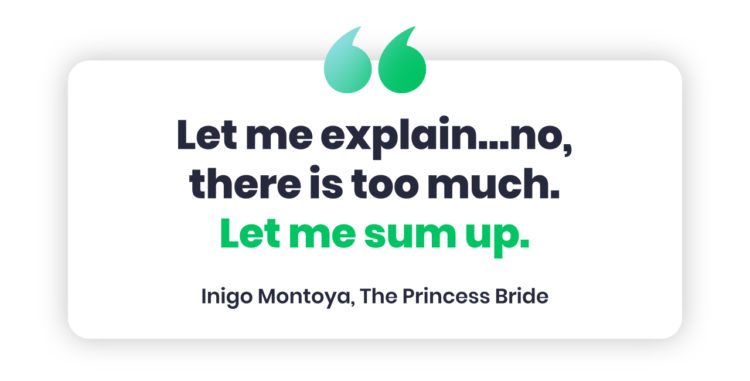Research shows that companies spend an average of 26% of their total marketing budget on content marketing. That number rises to 40% for the most successful companies. That’s a huge investment! So how do you ensure you get the most ROI from your marketing & sales content? Read on to find out.

What’s your favorite book to movie adaptation?
For some, it will be The Lord of the Rings, Peter Jackson’s epic reimagining of Tolkien’s fantasy world. For others, it will be Harry Potter or The Shawshank Redemption. Adapting stories from one format to another is a unique skill. And when fans have invested in a fictional world emotionally, it can be either exhilarating when directors get it right or hugely disappointing when they fail to do so.
But when translating stories from one context to another in the business world, we often don’t apply the same critical rigor we give to film directors adapting our favorite book to the silver screen. However, there is great value in doing so. When done right, re-using marketing and sales content can bring you a further return on the investment you’ve already made! Here’s how.
Marketing & sales content is nothing without context
Remember to line up your ducks. The Lord of the Rings wouldn’t have been much of a story without Gandalf, who arguably kicks off the plot in the first book by identifying the Ring and advising Frodo. While he is an instigating character, other characters are also required to make the story function. The action of the story revolves around the characters, after all.

Similarly, your sales content — no matter if it’s about a Dark Lord, a Sith Lord, or the Lord of the spreadsheets — must be organized. You can’t create a narrative about your company when critical pieces of information are missing, so before taking the story from one context to another, make sure you have all the content you need for the story to make sense in a new context. It’s easy to assume this is true, but try asking a friend who is not a colleague for their opinion to get some perspective on the story you’re trying to tell.
Bite-sized content sells

Whitepapers and reports are great examples of marketing and sales content, but while their main points may be critical for any number of audiences to hear, their length may mean a smaller readership. Try creating an explainer video of the key takeaways of a whitepaper to disseminate it to a broader audience, perhaps on a stand at an event or online through your website or social media channels.
Your thought leadership pieces can also get a second lease on life when condensed and visualized — and may even intrigue some to read the original asset for themselves. Have a blog that resonated with readers once upon a time that you would like to revisit? Or perhaps, in light of new technology or other recent development, there’s reason to re-examine it in a fresh light? Consider converting it into an interactive presentation, shortening it for a social media post, or rewriting it as the script for a webinar.
Visual communication tells a better story
“Books, shows, movies, and songs aren’t files we upload to our brains —they’re part of the tapestry of life, woven in with everything else,” says Julie Beck of The Atlantic. The same is true of the marketing and sales content we create – it’s a story. We need to be pulled in by emotional ‘hooks’ to get invested and care about the outcome. Translating emotional hooks from a written format to a visual one can be tricky, but color can help. Red, for example, can connote negativity or anger, whereas pale blue makes us feel light and refreshed.
Use contrast to draw the eye to the most pertinent information. That is especially important to consider when turning a written communication into a visual medium like an infographic or presentation. To repurpose marketing and sales content well, think about what you’d like your audience to feel and how you can translate the feel of the written document to the visual piece.
Need help getting started? Check out our latest guide How to Create an Effective Virtual Sales Presentation for tips.

Comments are closed.